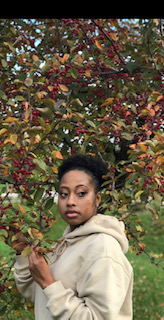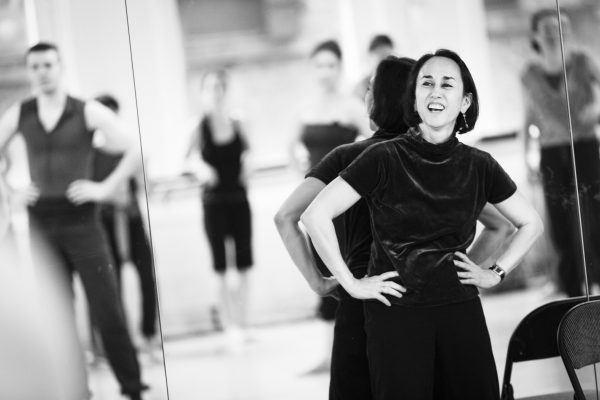This article was originally published in the Winter 2022 print special issue, with guest editor Amy Hull.
I’d like to begin at the end. I recently graduated with my MA in dance, under the guidance of my professor, mentor and friend Patrick Alcedo. In my first dance studies course, in my first year of my first degree, Patrick was my first cheerleader. It was in the last course I took with him that we read through several books, for one of which I presented on two chapters. On this particular day, I found myself shy while sharing what I thought was missing in these chapters; I was the youngest person in the Zoom room as well as an MA student in a PhD-level course. Patrick, whose encouragement for me often manifests as “You should” and not “I believe you can,” chimed in: “You should really edit a collection like this. You have an eye for what’s missing.” Editing was something I hadn’t considered, and now here I am guest editing this issue of The Dance Current. Thank you, Patrick, for not only addressing my self-doubts but also throwing them right out the window since the day we met. This issue ends with three more love letters to three other dance teachers who have changed the lives of their students in equally beautiful ways.
In my traditions, storytelling isn’t always linear, and as a fan of subverting the conventions of reading and writing, I’d like to move back, closer to the beginning of this issue. Kj Dowdie sets the tone in our Historical Moments column, “Recovering Stolen Dances: Until 1951, Indigenous dances were banned by law.” Dance is feared to an extent that it is suppressed still to this day in many contexts and many places in the world. I carry this knowledge with me in my dance practice, and I hope you will carry it in your journey through this issue.
Dance is feared to an extent that it is suppressed still to this day in many contexts and many places in the world.
Hull
Carry it with you when you read through Josh Murphy’s homecoming chronicles “Dragged Home,” where he has dropped anchor into Newfoundland’s small yet vibrant drag scene. There is hope on that island, while there is still pain for many in drag and gender performance communities. Drag is powerful.
Carry this knowledge with you through “102 Years of Beautiful Resistance” curated by Seika Boye, a photo essay exploring the many, often nuanced, manifestations of resistance in Black dances and dance experiences, with stories from 1918 through 2020. Just as Indigenous dances were banned, Black dances were suppressed, vilified and criminalized. Blackness and Black resistance are powerful.
Finally, call on this history when you read “On Indigeneity,” three personal essays reflecting on what exactly “Indigenous dances” are. While Indigenous dance forms were banned, Indigenous Peoples continued business-as-usual within other styles, bringing their knowledge and heritage and not only creating pockets of Indigenous practices but also contributing to the innovation of forms like ballet, modern, burlesque, contact improvisation and more. Indigenous contributions are powerful.
This issue explores histories, identities and questions of power that may not be missing from our hearts but I’ve certainly noticed to be missing from popular media and discourses.
Hull
Returning to the very beginning, this issue is wrapped up inside an originally illustrated cover by Saelym Degrandpre (Taqqiq), an Inuk artist. This illustration encompasses my vision for the issue. In Patrick’s words, “What’s missing?” This issue explores histories, identities and questions of power that may not be missing from our hearts but I’ve certainly noticed to be missing from popular media and discourses. That is not to say I’ve been able to address every gap, but I have made my contribution in building the first part of the bridge’s foundation. The aerial dancer Degrandpre has drawn shows all three components I’ve chosen: her Inuk history and identity through her tattoos, and her power through her strength, poise and confidence. Carry those aspects of her power after you read this issue and continue sharing your own contributions.
Dance Media Group strengthens the dance sector through dialogue. Can you help us sustain national, accessible dance coverage? Your contribution supports writers, illustrators, photographers and dancers as they tell their own stories. Dance Media Group is a charitable non-profit organization publishing The Dance Current in print and online.

Tagged:






